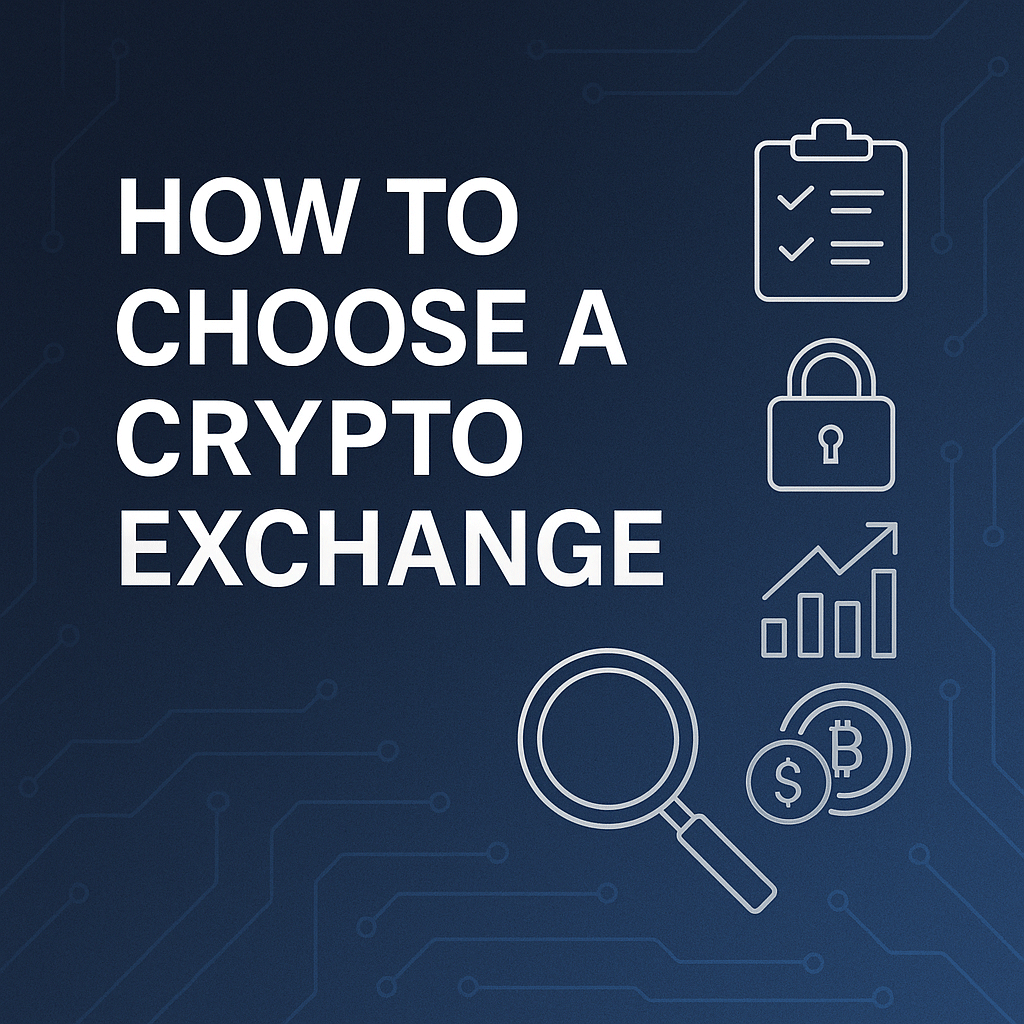With hundreds of cryptocurrency exchanges available in 2025, choosing the right platform can be overwhelming. Each exchange offers its own mix of features, trading tools, security standards, and geographic limitations.
Whether you’re a retail investor or a professional trader, making the right decision from the start can save you money, improve your experience, and protect your assets.
Here’s a detailed checklist to help you evaluate and choose the best crypto exchange for your needs.
1. Regulatory Compliance
One of the first things to check is whether the exchange operates under the legal framework of your country.
- Does it have a license in your jurisdiction?
- Is it registered with financial authorities (e.g. SEC, FCA, MAS)?
- Are user assets segregated from company funds?
For U.S. users, platforms like Coinbase and Kraken are compliant and transparent. In the EU, Bitstamp and Binance France are authorized under MiCA guidelines.
2. Security Features
Security is critical when choosing an exchange. Look for these features:
- Two-Factor Authentication (2FA)
- Cold wallet storage (at least 90% of user funds)
- Proof-of-reserves or third-party audit reports
- Bug bounty programs
- Insurance funds (like Binance SAFU or Coinbase insurance policies)
If an exchange has suffered previous hacks, research how it responded and whether users were compensated.
3. Trading Fees and Costs
Low fees can make a significant difference over time, especially for high-volume traders.
Compare:
- Spot trading fees (maker/taker model)
- Futures and derivatives fees
- Deposit and withdrawal fees
- Spreads and hidden costs on Instant Buy options
Exchanges like Bybit and Binance are known for low fees, while Kraken and Coinbase trade lower fees for higher security and compliance.
4. Available Cryptocurrencies and Pairs
Check if the platform supports:
- Major coins (BTC, ETH, USDT, BNB)
- Trending altcoins or meme coins
- Fiat pairings (USD, EUR, GBP)
- Cross-chain swaps or Layer 2 support
If you plan to trade lesser-known tokens, platforms like KuCoin, Gate.io, or Uniswap may offer better availability than regulated exchanges.
5. Liquidity and Volume
High liquidity ensures your trades execute quickly and with minimal slippage. Look for:
- 24-hour trading volume (CoinMarketCap or CoinGecko data)
- Order book depth
- Market maker participation
Major exchanges like Binance, Coinbase, and OKX offer strong liquidity across pairs.
6. Platform Usability and Interface
The user interface affects your trading experience. Consider:
- Is the trading dashboard intuitive and customizable?
- Does it offer mobile apps, API support, and desktop trading tools?
- Is customer support responsive and multilingual?
Beginners may prefer Coinbase or Bitpanda, while advanced users might gravitate toward Kraken Pro or Bybit.
7. Additional Features
Depending on your goals, these may matter too:
- Staking & Yield Options – for passive income
- NFT Marketplaces – for asset diversification
- Launchpads – for early access to new projects
- Copy Trading / Bots – for automation
Look for platforms that align with your personal strategy.
8. Community Reputation and Transparency
Finally, check the exchange’s reputation online:
- Are there recent complaints or withdrawal issues?
- Is the team known and public-facing?
- Do they publish regular reports or security updates?
Transparency builds trust. Avoid exchanges with vague legal structures or anonymous leadership.
Summary: Decision Checklist
| Factor | Why It Matters |
|---|---|
| Regulation | Legal safety and fund protection |
| Security | Asset protection and platform trustworthiness |
| Fees | Minimizing long-term trading costs |
| Supported Assets | Access to preferred coins and trading pairs |
| Liquidity | Fast execution and low slippage |
| Interface | User experience and trading speed |
| Extra Features | Yield, staking, and automation opportunities |
| Transparency | Public leadership and accountability |
Final Thoughts
Choosing the right crypto exchange is a personal decision, shaped by your goals, location, and trading style.
In 2025, the best platforms combine low fees, robust security, and innovative features.
Start with your priorities — whether it’s compliance, altcoin access, or advanced tools — and pick a platform that matches your risk tolerance and strategy.
And always remember: Not your keys, not your coins. Consider self-custody for long-term holdings.

 Bitcoin
Bitcoin  Ethereum
Ethereum  Tether
Tether  XRP
XRP  USDC
USDC  TRON
TRON  Lido Staked Ether
Lido Staked Ether  Dogecoin
Dogecoin  Figure Heloc
Figure Heloc